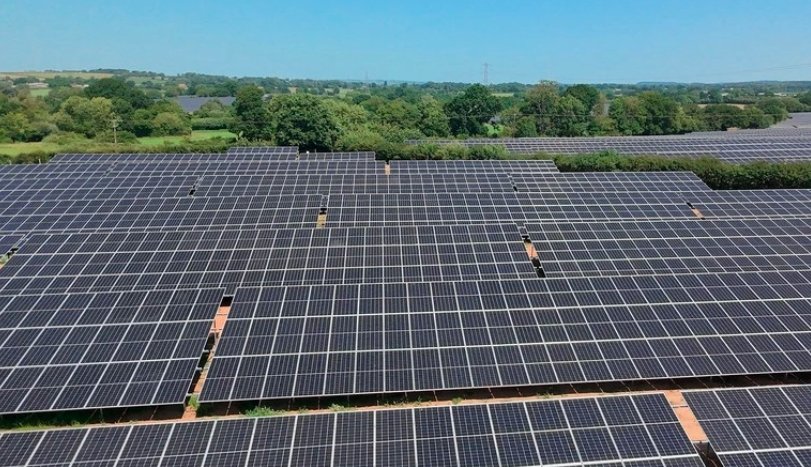Third collaboration between the firms boosts UK’s energy resilience with Chinese-made batteries
British energy storage developer Field has appointed Clarke Energy as the principal contractor for a new 50-MW / 100-MWh battery energy storage system (BESS) in the northeast of Scotland, marking another strategic step in Britain’s transition to a more flexible, decarbonised power grid.
Set on a rural site at Drum Farm near Keith, the project deepens ties between Field and Clarke Energy, who previously worked together on BESS developments in Newport, South Wales, and Whitebirk, Blackburn. This third joint effort will deliver one of the largest standalone battery systems in northern Scotland to date.
Construction is expected to begin in late summer 2025, with commissioning planned for 2026.
Building Storage Capacity — and Trust
For Clarke Energy, a global player best known for gas engine solutions and power generation infrastructure, the contract includes full EPC services — engineering, procurement, and construction — as well as balance of plant (BoP) works. The company will oversee all infrastructure development on-site, from grid connection to system integration.
“This is more than just another build,” said a spokesperson for Clarke Energy. “It’s part of a growing partnership with Field to strengthen the UK’s energy storage backbone, particularly in grid-constrained or wind-rich areas like the northeast of Scotland.”
Keith sits in Moray, a region with heavy wind generation but limited storage, making it an ideal location for balancing supply and demand through grid-scale batteries.

Envision Battery Tech Takes Centre Stage
The battery modules themselves will come from Envision Energy, a Chinese clean tech firm increasingly supplying BESS hardware to European markets. Field has previously used Envision batteries in other installations — a nod to the growing role of Chinese tech in enabling Britain’s energy flexibility.
The Keith project will feature a two-hour discharge duration, meaning the 50-MW system will deliver 100 MWh of capacity — enough to power over 100,000 homes for an hour, according to standard UK energy usage estimates.
Scotland’s Storage Push Gains Momentum
This project lands at a critical time for Scotland’s grid. With massive offshore wind farms coming online and intermittent generation increasing, National Grid ESO has warned of a growing need for flexible assets like batteries.
In fact, grid congestion in the Highlands has led to curtailment payments to wind farms — effectively paying them not to produce power. Energy storage systems like the one near Keith allow excess wind energy to be stored and dispatched when needed, reducing waste and cutting carbon emissions.
“This isn’t just about decarbonisation — it’s about efficiency,” said Field CEO Amit Gudka in a previous interview. “If we don’t store the clean energy we generate, we lose the whole point.”
Field and Clarke Energy: A Rapidly Scaling Partnership
This marks the third time Field has tapped Clarke Energy as a delivery partner. The companies are becoming a reliable duo in the UK’s fast-growing BESS sector, with Clarke taking on the heavy-lift engineering and Field leading project development and grid strategy.
Here’s a snapshot of their ongoing collaborations:
| Location | Capacity | Status | Battery Provider |
|---|---|---|---|
| Newport, Wales | 40 MWh | Completed (2024) | Envision |
| Whitebirk, England | 50 MWh | Operational (2025) | Envision |
| Keith, Scotland | 100 MWh | Under development | Envision |
With more than 15 BESS sites either planned or operational across the UK, Field aims to become a major force in grid balancing and energy optimisation over the next five years.
Why This Matters — Beyond the Numbers
-
Decentralised flexibility: Batteries allow energy to be stored close to where it’s generated or consumed, reducing strain on transmission lines.
-
Faster grid response: Unlike gas turbines, batteries can respond within milliseconds to frequency changes, improving grid stability.
-
Revenue stacking: Projects like Keith can participate in multiple energy markets — frequency response, arbitrage, and capacity — improving their return on investment.
Project Milestones and Outlook
The Keith BESS project is currently in pre-construction phases, including final site surveys, procurement contracts, and environmental compliance checks.
Key timeline:
-
Summer 2025: Construction start
-
Early 2026: Commissioning and testing
-
Mid 2026: Full operation
Once online, the system will connect to the Scottish and Southern Electricity Networks (SSEN) grid, participating in both balancing services and wholesale energy arbitrage.
Field’s strategy revolves around bringing multiple gigawatt-hours of storage to the UK grid by 2030 — positioning battery systems not just as emergency backup, but as everyday infrastructure.
As the clean energy transition accelerates and the UK looks to wean itself off natural gas for good, systems like the Keith battery will be crucial for turning intermittent green energy into stable, dependable supply.


















